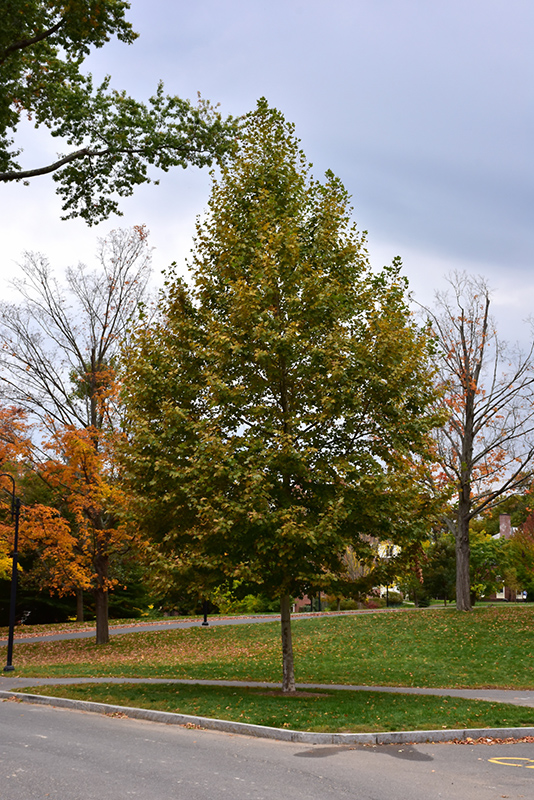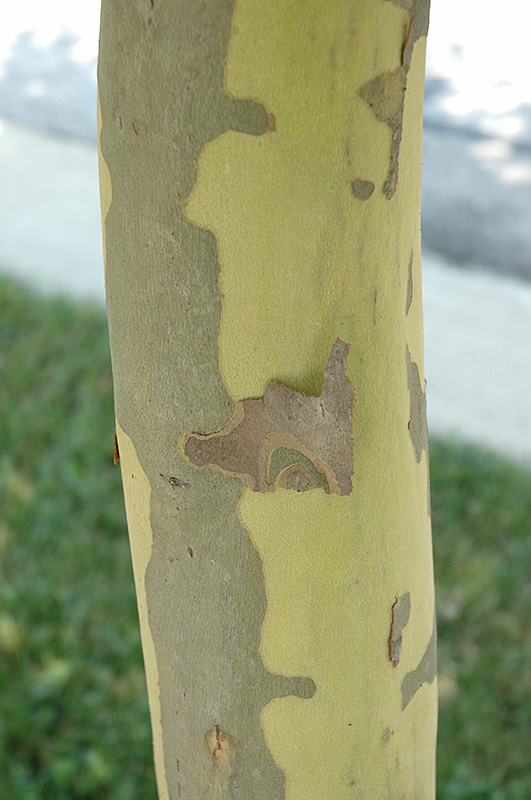Bloodgood London Planetree
Platanus x acerifolia 'Bloodgood'
Height: 90 feet
Spread: 70 feet
Sunlight:
![]()
Hardiness Zone: 5
Description:
A popular, durable and attractive shade and street tree, very tolerant of adverse conditions and road salt; interestingly shaped leaves and beautiful white and brown mottled bark; best in larger landscapes; improved disease resistance over other varieties
Ornamental Features
Bloodgood London Planetree has rich green deciduous foliage on a tree with a pyramidal habit of growth. The large serrated lobed leaves turn yellow in fall. The mottled silver bark is extremely showy and adds significant winter interest.
Landscape Attributes
Bloodgood London Planetree is a deciduous tree with a distinctive and refined pyramidal form. Its relatively coarse texture can be used to stand it apart from other landscape plants with finer foliage.
This tree will require occasional maintenance and upkeep, and is best pruned in late winter once the threat of extreme cold has passed. Deer don't particularly care for this plant and will usually leave it alone in favor of tastier treats. It has no significant negative characteristics.
Bloodgood London Planetree is recommended for the following landscape applications;
- Shade
Planting & Growing
Bloodgood London Planetree will grow to be about 90 feet tall at maturity, with a spread of 70 feet. It has a high canopy of foliage that sits well above the ground, and should not be planted underneath power lines. As it matures, the lower branches of this tree can be strategically removed to create a high enough canopy to support unobstructed human traffic underneath. It grows at a medium rate, and under ideal conditions can be expected to live to a ripe old age of 100 years or more; think of this as a heritage tree for future generations!
This tree should only be grown in full sunlight. It is very adaptable to both dry and moist locations, and should do just fine under average home landscape conditions. It may require supplemental watering during periods of drought or extended heat. It is not particular as to soil type or pH, and is able to handle environmental salt. It is highly tolerant of urban pollution and will even thrive in inner city environments. Consider applying a thick mulch around the root zone in both summer and winter to conserve soil moisture and protect it in exposed locations or colder microclimates. This particular variety is an interspecific hybrid.


